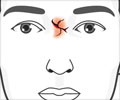People who undergo a heart transplant usually lose significant bone mass in the first year after the transplant, mainly due to the powerful drugs that keep their bodies from rejecting the new organ. The bone loss greatly increases their risk for fractures. Studies suggest the prevalence of fractures among this group ranges from 22 percent to 44 percent. Preventing bone loss is a primary goal of treatment, but which drugs work best in this situation is unclear.
In a study done researchers assigned 149 transplant patients to receive treatment with either the bisphosphonate drug alendronate or calcitriol, a form of vitamin D. All began the therapy about a month after their transplant. At a one-year follow up, patients on alendronate had a reduction in bone mineral density at the lumbar spine of 0.7 percent. The calcitriol group had a reduction of 1.6 percent. BMD decreased by 1.7 percent at the femoral neck for the alendronate patients and 2.1 percent for the calcitriol patients. The rate of fractures was about the same for the two groups.A comparison of the treatment groups with a similar group of patients receiving no treatment for bone loss indicates both treatments help prevent bone loss . However, significantly more of the calcitriol patients than the alendronate patients -- 27 percent vs. 7 percent -- also developed a condition known as hypercalciuria, which is excessive loss of calcium in the urine
Thus based on these studies researchers conclude that alendronate is the better treatment for bone loss among people who have undergone a heart transplant.











